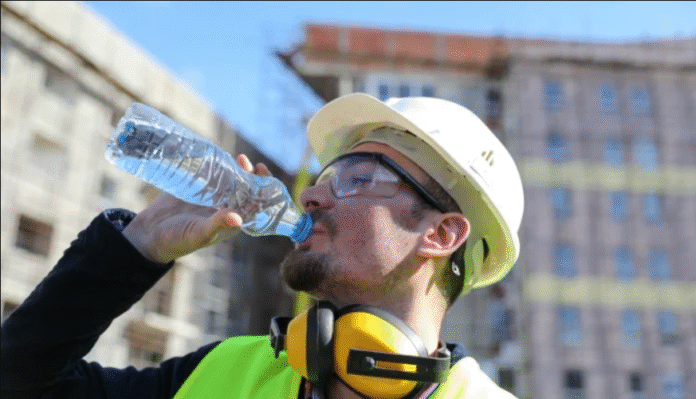Extreme Heat at Work: WHO Report Warns of Dangerous Risks for Workers in 2025
Extreme heat at work is becoming a critical global health issue, and a new joint report from the World Health Organization (WHO) and the World Meteorological Organization (WMO) highlights just how serious the risks have become. As climate change intensifies heatwaves, millions of workers across the globe face mounting dangers to their health, safety, and productivity.
This latest report is the first comprehensive analysis of workplace heat stress since 1969, and it calls on governments, employers, and workers to act quickly with adaptation strategies.
Why Extreme Heat at Work Is a Growing Threat
The WHO stresses that extreme heat at work is more than just uncomfortable, it is life-threatening. Rüdiger Krech, WHO’s Director of Environment, Climate, and Health, explained that prolonged exposure to temperatures over 38°C can trigger severe dehydration, kidney failure, and even heat strokes.
The reality is that heatwaves are no longer rare. Data shows:
-
2024 was the hottest year ever recorded.
-
Temperatures of 40°C in Europe and 50°C in the Middle East and Africa are now normal.
-
Mediterranean sea surface temperatures hit record highs, worsening the impact of heat on nearby countries.

The WMO also warned that the last decade has been the warmest in human history, making workplace adaptation an urgent global priority.
How Extreme Heat at Work Impacts Productivity
According to the WHO/WMO report, extreme heat at work doesn’t only put health at risk, it also harms economies. For every 1°C rise above 20°C, workplace productivity drops by 2%.
Additionally, safety declines dramatically. During Europe’s 2023 heatwave, Switzerland reported a 7% increase in workplace accidents once temperatures exceeded 30°C. Causes included:
-
Loss of concentration due to heat stress.
-
Reduced sleep quality from hot nights.
-
Slower reaction times, leading to higher risks of injury.
Construction workers, agricultural laborers, and outdoor industries are the hardest hit.
Workplace Adaptations Already in Action
Several countries are beginning to take the threat of extreme heat at work seriously:
-
Italy: Recently passed an emergency decree to stop outdoor labor during the hottest hours.
-
Switzerland: Paused construction work during 2023’s heatwave, with strong support from unions.
-
Dubai, UAE: Workers often endure 50°C, leading to mandated hydration and break schedules.
Nico Lutz of Switzerland’s largest trade union, Unia, emphasized the need for strict guidelines:
“Above a certain temperature, it’s irresponsible to keep working. Productivity should never come before health.”
Schools and Education Systems Also at Risk
The WHO warns that extreme heat at work is not the only concern, schools and students are also vulnerable. Children and teachers in Europe faced unbearable classroom conditions as temperatures climbed above 30°C.
Some responses include:
-
In Germany, “Hitzefrei” rules allow schools to close early when it’s too hot.
-
In Switzerland, teachers are advised to take classes to swimming pools when possible.
-
Experts recommend renovating schools with better ventilation and air conditioning systems.

But WHO cautions that closing schools too often, as seen during Covid-19, can have long-lasting negative effects on children’s education. Instead, infrastructure upgrades are the sustainable solution.
The Economic Cost of Ignoring Extreme Heat at Work
The WHO warns that adaptation requires investment, but failing to act will cost even more in the long run. Governments already facing budget pressure from defense spending risk overlooking the urgent need for climate adaptation.
Krech explains:
“If workplaces are forced to shut down or workers fall ill from heat stress, the loss of productivity will far outweigh adaptation costs. Ignoring the risks is the most expensive mistake governments can make.”
Urgent Call for Global Cooperation
The WHO/WMO report calls for collective action, involving:
-
Governments creating enforceable heat-protection laws.
-
Employers ensuring safe work schedules, hydration access, and rest breaks.
-
Unions and workers pressing for fair safety standards.
-
Schools and health institutions preparing with cooling systems and adaptive policies.
Krech even suggested reconsidering everyday practices such as school uniforms, asking whether they are suitable for rising temperatures.
Ultimately, the message is clear: extreme heat at work is not just a climate challenge, but a human survival issue.
Conclusion
The risks of extreme heat at work will only worsen as the planet warms. The WHO’s latest findings should be a wake-up call for governments, companies, schools, and societies everywhere. Without urgent adaptation, millions of lives and livelihoods remain at risk and the cost of inaction will be far higher than prevention.

